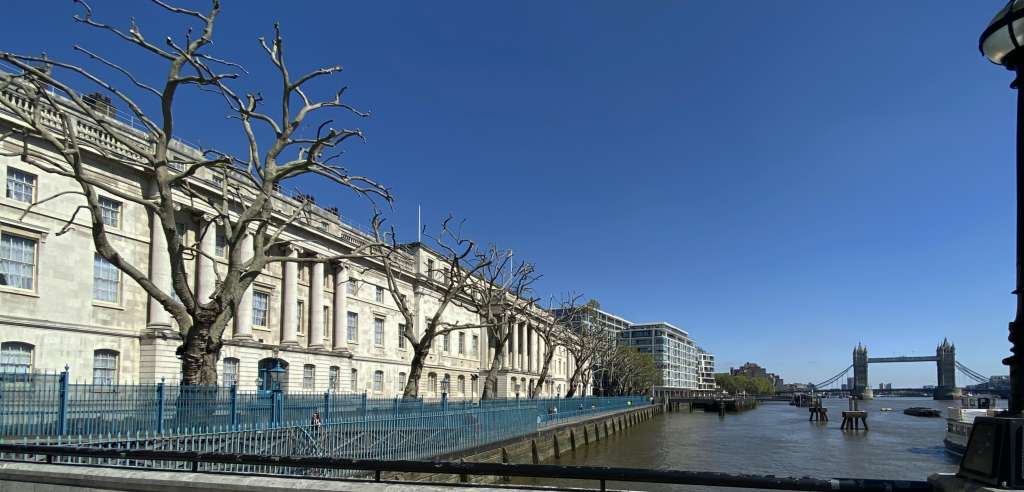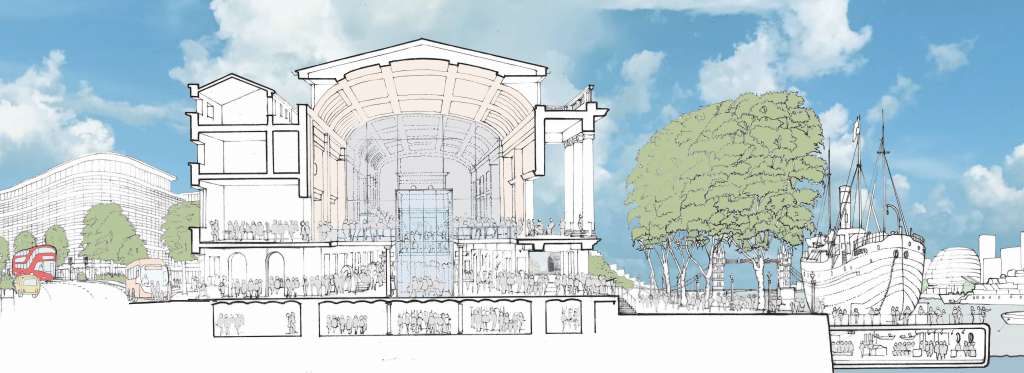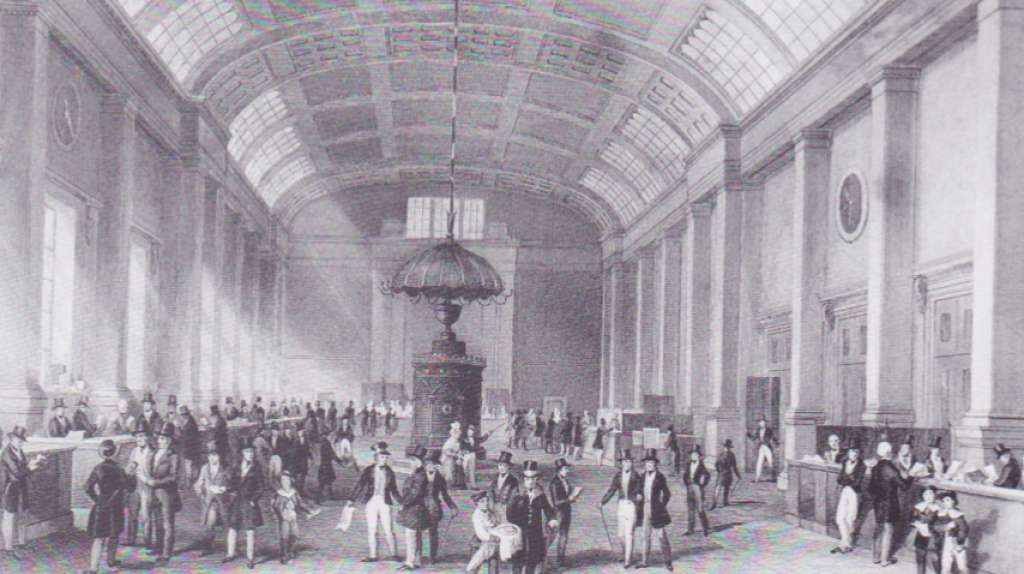PRESS RELEASE: Future of magnificent Thames landmark to be decided by City Corporation
5th October 2020
Save Britain's Heritage calls for public debate on the future of the Custom House.
The 1820s Custom House overlooking the Pool of London is a grand classical composition in the mould of Somerset House and the Edwardian County Hall next to the London Eye.
Yet over the last 50 years, this Grade I listed masterpiece has been all but forgotten, screened by trees from river boats and high security fences. As the high security home of HM Customs, it has been far less in the public eye than the riverside headquarters of MI5 and MI6 – though the public was commendably allowed in on Heritage Open Day in 2019.
The Custom House was included in the Mapeley STEPS PFI deal in 2001, which saw around two thirds of the UK tax and customs estate sold off to a Bermuda based property company for £370m, and then leased back to the government under a 20 year agreement. A planning application has now been lodged to turn it into a luxury hotel. There are positive aspects to the proposals: the ground floor will be open to the public and the carpark on the riverside will become a public promenade. But the Long Room on the first floor, one of the grandest interiors in London, will be for hotel guests.
SAVE Britain's Heritage believes that before planning permission is granted, consideration should be given to finding a more public role for the Custom House in line with the Greater London Authority’s recently published cultural strategy for the Thames.
SAVE's latest report by architect John Burrell is intended to show the possibilities. We invite those who believe in London as a great cultural capital to put on their thinking caps and look at ways of giving this great public building a more public role. Download the SAVE report at the bottom of this page.
The SAVE report illustrates examples in other cities of great public buildings transformed into picture galleries and museums, both commercial galleries and more permanent collections. Nearby Somerset House is an example. Such transformations have been carried out not just by governments but by philanthropists and specially created charitable trusts. The cross section drawing by John Burrell shows the Long Room opened up for public events and new connections created between the lower floors and vast basements. New space for people on the River Thames is transformed with the historic ship SS Robin moored alongside and open to visitors.
SAVE publishes the campaigning report to draw public attention to the potential of Custom House. A luxury hotel may have its attractions, but Custom House can play a more public role in London’s Arts strategy as promoted by the City Corporation and the Mayor of London.
Marcus Binney, executive president of SAVE says: "The London Custom House is a forgotten treasure on a prime site on the Thames. The question before the City Corporation is whether permission should be given for a change of use to luxury hotel or whether it should have a more public use".
In the GLA's Thames Cultural Vision document published in 2019, deputy mayor for culture Justine Simons says: "Are we making the most of the river and do enough Londoners get to benefit from all it has to offer? I would say not. We know that many London school children have never even seen the river. The river’s cultural life, whilst lively, lacks consistency and night-time activity is limited. Cities like Paris, Amsterdam or Berlin celebrate rivers and canals as key destinations at the heart of cultural life. And it’s clear the River Thames has unrealised potential for London".
SAVE calls on the City Corporation to defer the decision on this planning application and hold a round table discussion on the future of this most important public building. The applicants can present their plans, but the public forum should allow a more wider ranging discussion of uses some of which may be compatible with the current plans. The Round Table discussion can take place with suitable social distancing and could be filmed so others could hear the discussions. Let's not squander this once in a generation opportunity. Let the debate begin.
What you can do:
Write to the chairman of the City Corporation Planning Committee asking for a round table style public discussion of the proposals for Custom House and meanwhile to defer the decision on this planning application
Via email to the Chair: alastair.moss@cityoflondon.gov.uk
Via email to the Planning Department: PLNComments@cityoflondon.gov.uk
Via the City of London contact form: https://mycity.cityoflondon.gov.uk/en/service/Contact_the_City
Via Twitter: @cityoflondon
Write to the Mayor of London asking him to broaden the discussion of public and cultural uses of Custom House in line with the GLA's Thames Cultural Strategy
Via email: mayor@london.gov.uk
Via the GLA contact form: https://www.london.gov.uk/contact-us-form
Via Twitter: @mayoroflondon
ENDS
Note to editors
1. Click here to download the new SAVE report entitled The Custom House, by John Burrell
2. For more information contact SAVE Britain's Heritage at office@savebritainsheritage.org or 07946 946 929.
3. SAVE Britain’s Heritage has been campaigning for historic buildings since its formation in 1975 by a group of architectural historians, writers, journalists and planners. It is a strong, independent voice in conservation, free to respond rapidly to emergencies and to speak out loud for the historic built environment.



